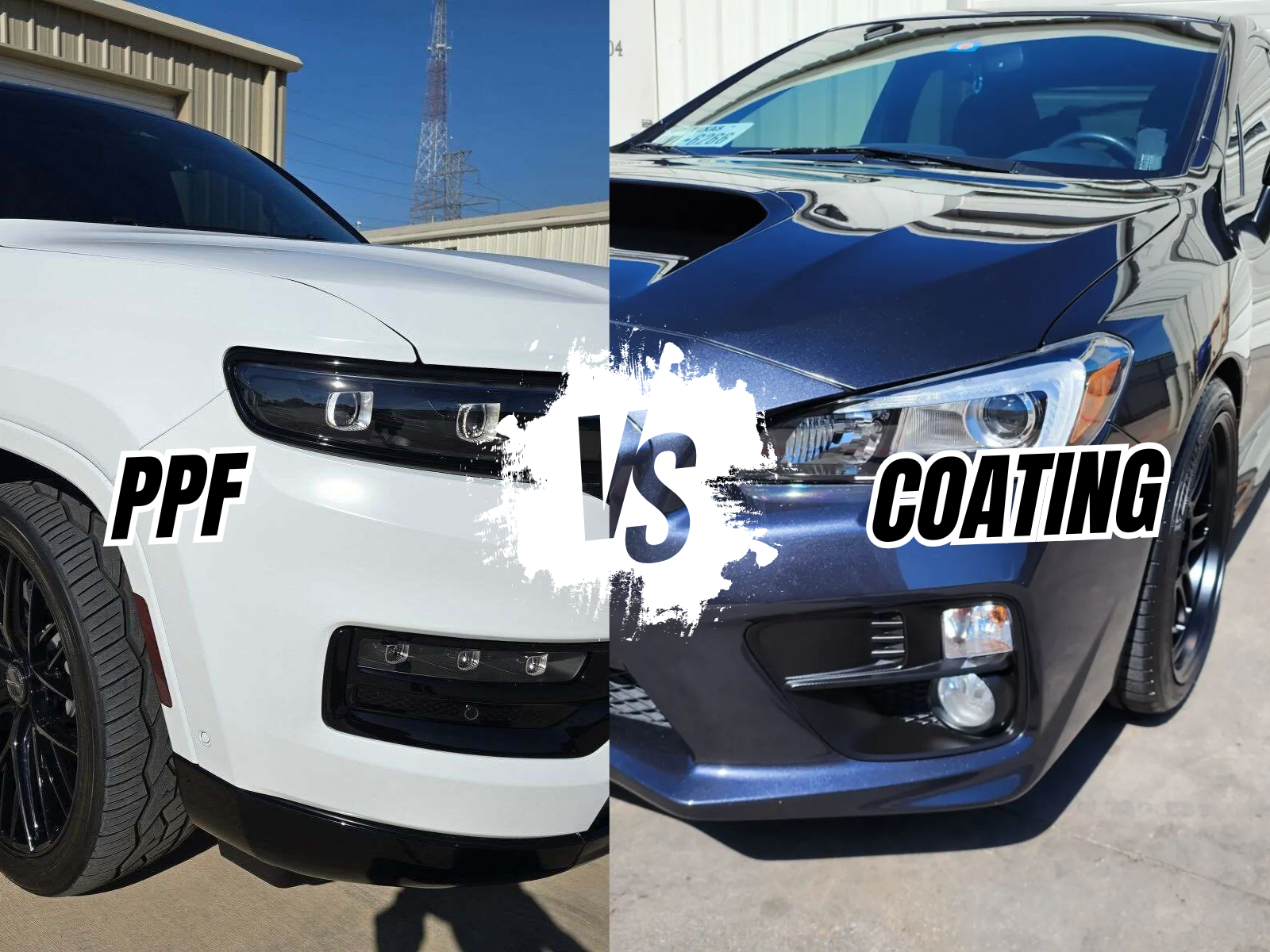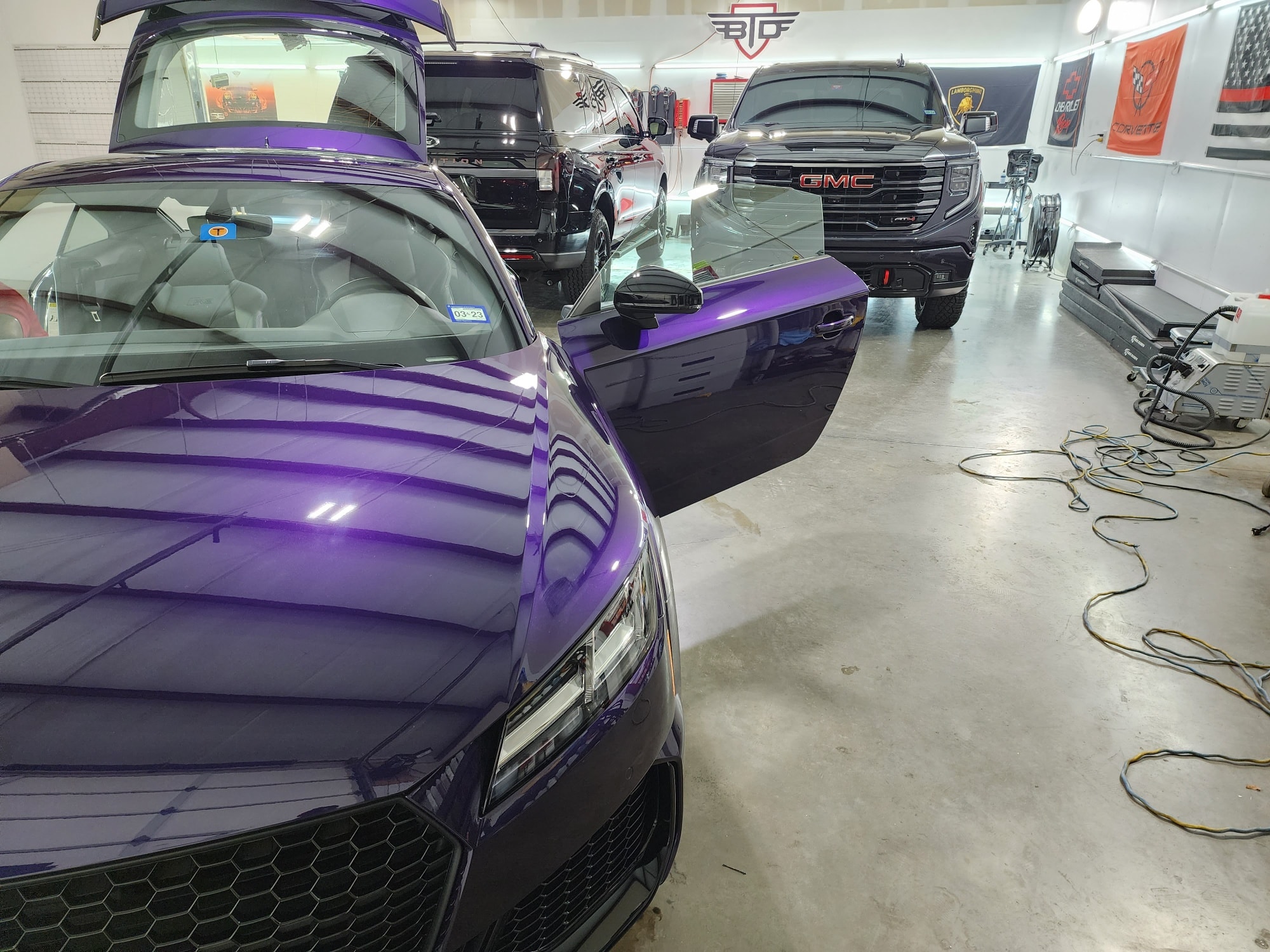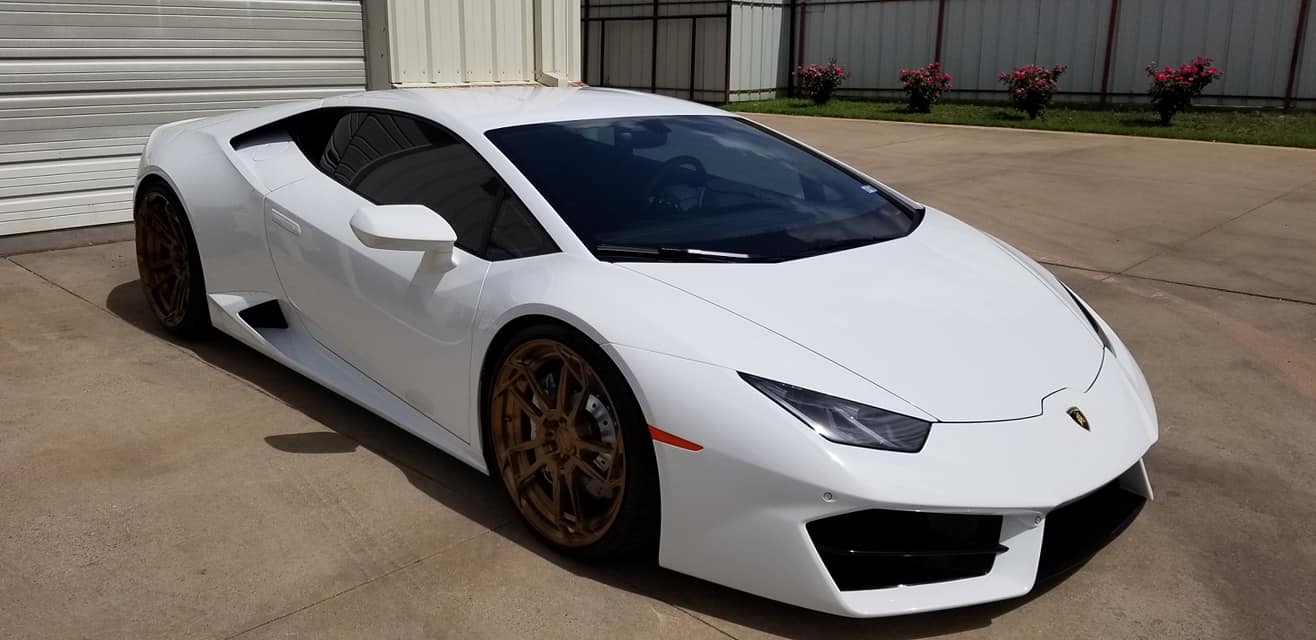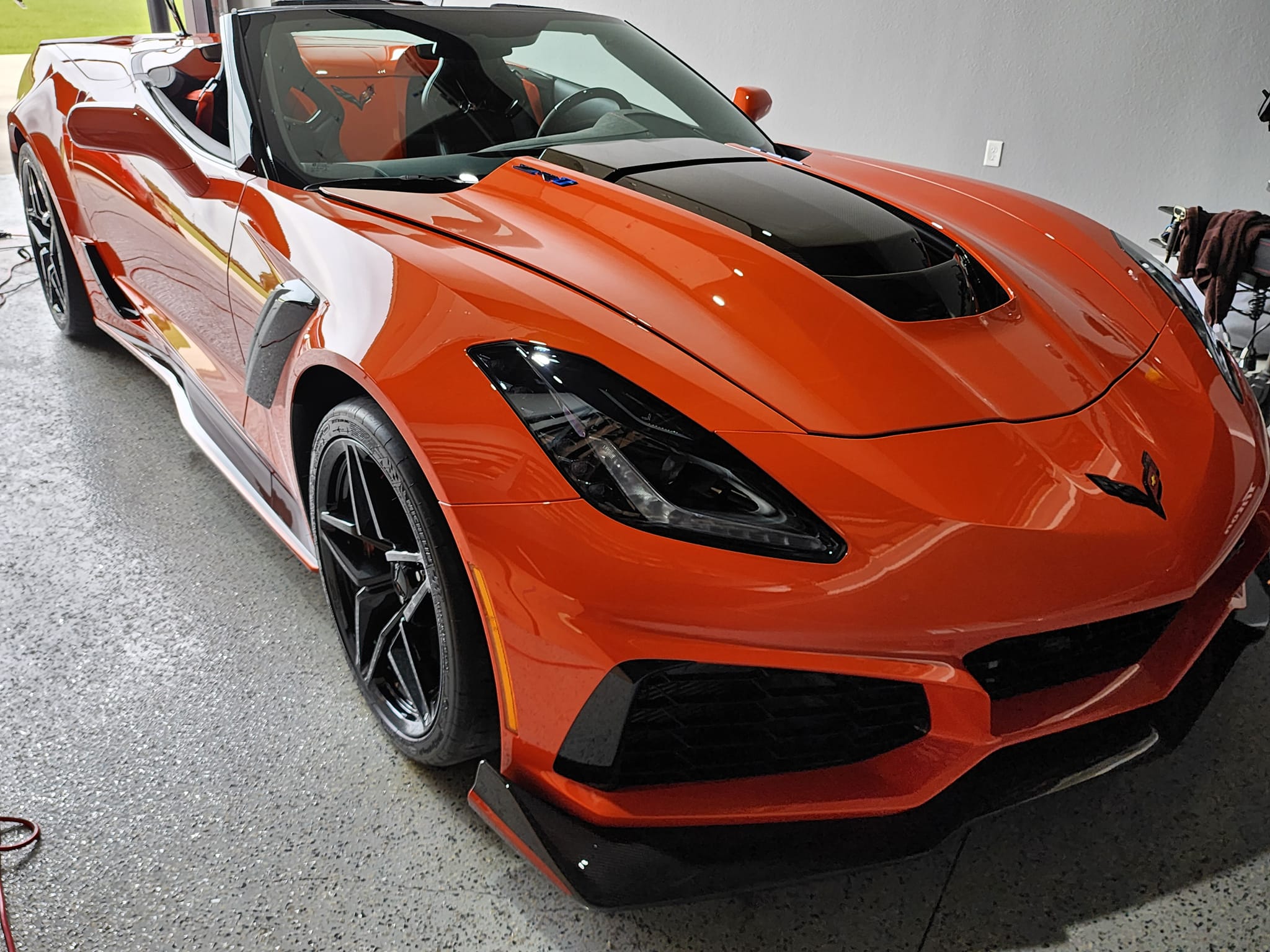Car owners recognize the value of protecting their vehicle investments, driving the multi-million dollar paint protection market. Paint Protection Film (PPF) and Ceramic Coating are leading choices for maintaining a car’s appearance.
But which one is right for your vehicle? Choosing the right vehicle protection requires understanding the benefits and differences of PPF and ceramic coating to match your needs and driving style. This guide provides the necessary information for making a well-informed decision.
Understanding PPF (Paint Protection Film)
What is PPF?
Paint Protection Film, commonly known as PPF or clear bra, is a transparent thermoplastic urethane film applied to the exterior surfaces of your vehicle. This physical barrier creates a protective shield between your car’s paint and the elements. The film is precisely cut to fit the contours of your vehicle, creating a seamless, nearly invisible layer of protection.
History and Evolution of PPF Technology
PPF technology wasn’t created for luxury vehicles. It was first developed for military applications to protect helicopter blades from debris damage during the Vietnam War. The automotive industry eventually adopted this technology, and it has evolved significantly over the decades.
Early versions were thicker, more visible, and prone to yellowing. Modern PPF, however, has become remarkably advanced, featuring self-healing properties, hydrophobic surfaces, and superior clarity that makes it virtually undetectable when properly installed.
How PPF Works to Protect Your Vehicle
The protective mechanism of PPF is primarily physical. The film absorbs impacts from road debris, gravel, bug splatter, bird droppings, and other potential paint-damaging elements. The most advanced PPF products feature self-healing technology—when exposed to heat (either from the sun or deliberately applied), minor scratches and swirl marks on the film can repair themselves.
Understanding Ceramic Coating
What is Ceramic Coating?
Ceramic coating is a liquid polymer that, when applied to a vehicle’s exterior, creates a chemical bond with the factory paint. This forms a semi-permanent layer of protection that doesn’t wash away or break down with exposure to atmospheric conditions. Unlike traditional waxes or sealants, ceramic coatings use nanotechnology to create an invisible, extremely thin layer of protection.
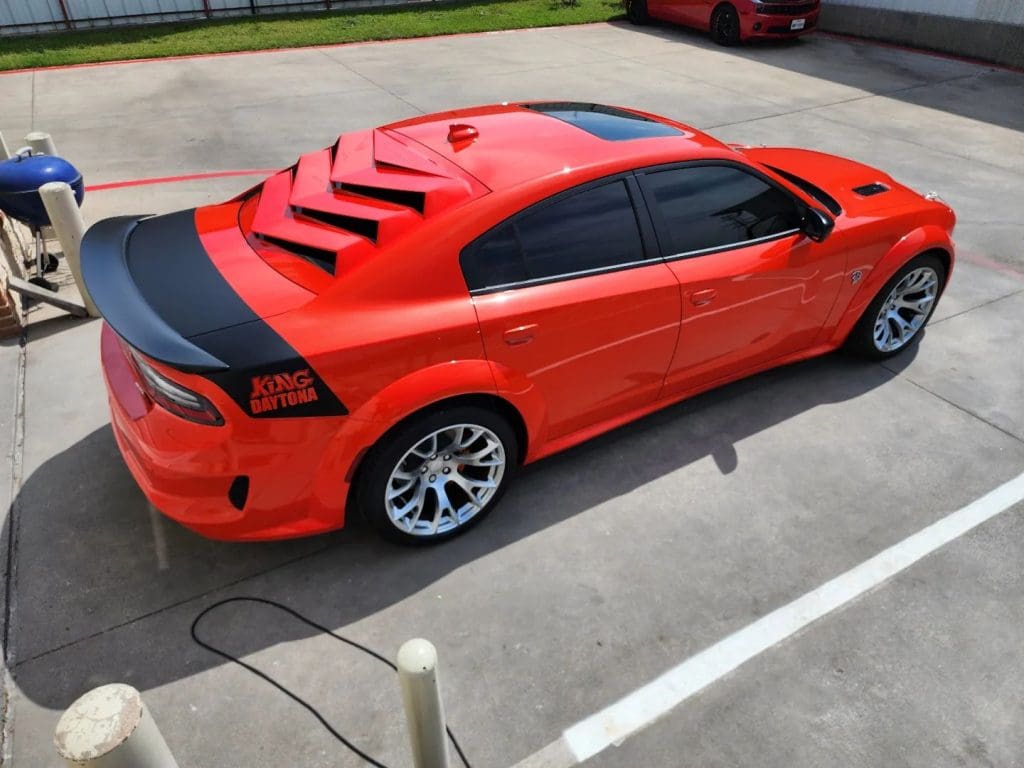
The Science Behind Ceramic Coatings
Ceramic coatings contain Silicon Dioxide (SiO2) or other similar compounds that form an invisible, glass-like surface when cured. The nano-particles in the coating fill microscopic pores in your car’s paint, creating an extremely smooth, hydrophobic surface. The higher the SiO2 content (often measured in percentages), the more durable and effective the coating typically is.
How Ceramic Coating Bonds with Your Car's Paint
When applied correctly, ceramic coating chemically bonds to your vehicle’s clear coat. This isn’t simply sitting on top of the paint like a wax; it’s actually integrating with it. This creates a permanent or semi-permanent bond that can only be removed by machine polishing or other abrasive methods—it won’t wash away with soap or degrade quickly with environmental exposure.
Ceramic Coating vs. Conventional Ceramic Coating
Protection Level
The most fundamental difference between these two products lies in their protection capabilities. PPF provides superior physical protection against impact damage. As a physical barrier, it helps shield your paint from rock chips and minor collisions that would otherwise directly damage your clear coat and paint.
Ceramic coating excels in chemical protection. It creates a hydrophobic surface that repels water, prevents contaminants from bonding to the paint, and provides excellent resistance against UV rays, oxidation, and chemical stains. However, it offers minimal protection against physical impacts and scratches.
The self-healing properties of PPF give it another advantage for preventing minor scratches from remaining visible—something ceramic coating simply cannot do.
Appearance and Aesthetics
Both products enhance your vehicle’s appearance, but in different ways. PPF is designed to be virtually invisible, preserving your car’s original finish without significantly altering its appearance. The highest quality PPF will be nearly undetectable once installed.
Ceramic coating, however, actively enhances your vehicle’s appearance by intensifying the depth and glossiness of your paint. It creates a “wet look” with enhanced reflectivity and a candy-like finish that many car enthusiasts crave. If pure aesthetics are your priority, ceramic coating often delivers more visible enhancement.
Durability and Longevity
When properly maintained, high-quality PPF can last between 7-10 years. The thickness of the film (typically between 6-8 mils) contributes to this impressive longevity.
Ceramic coatings generally have a shorter lifespan, typically ranging from 2-5 years depending on the grade of coating used and the maintenance provided. Some premium ceramic coatings claim longer lifespans, but generally, PPF will outlast ceramic coatings in most environments.
Factors affecting longevity for both include exposure to harsh environmental conditions, maintenance practices, and the quality of the initial installation.
Maintenance Requirements
Both protection options reduce maintenance compared to an unprotected vehicle, but they differ in maintenance approaches.
PPF-protected vehicles can be washed normally, though pressure washers should be used with caution. The film creates a barrier that makes cleaning relatively straightforward, and the self-healing properties can remove minor swirl marks when exposed to heat.
Ceramic-coated vehicles benefit from the coating’s hydrophobic properties, which cause water to bead up and roll off the surface, carrying dirt with it. This self-cleaning effect means less frequent washing and easier removal of contaminants. However, ceramic coatings do require occasional maintenance products to restore their hydrophobic properties to peak performance.
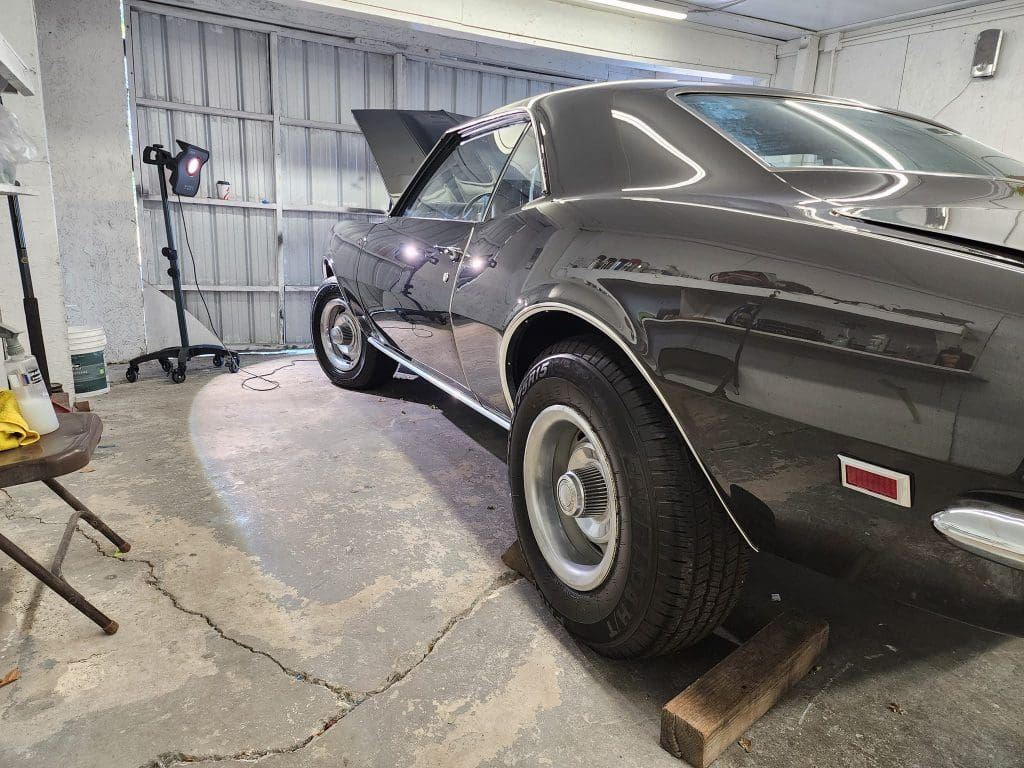
Cost Comparison
PPF is undeniably more expensive upfront. However, when considering longevity (7-10 years for PPF vs. 2-5 years for ceramic coating), the long-term value proposition becomes more balanced. A high-end ceramic coating might need to be reapplied 2-3 times during the lifetime of a single PPF installation.
Making the Right Choice: Factors to Consider
Your Driving Environment
Your typical driving conditions should heavily influence your decision:
- Highway commuters face more rock chips and flying debris, making PPF particularly valuable
- Urban drivers might contend with environmental fallout, bird droppings, and tree sap, where ceramic coating’s chemical resistance shines
- Vehicles in coastal areas benefit from ceramic coating’s protection against salt and oxidation
- Cars in extreme sun exposure need UV protection that both options provide, but ceramic coating often has superior UV resistance
Vehicle Type and Value
Different vehicles may warrant different approaches:
- Luxury and exotic vehicles often justify the higher investment of PPF (or combination approaches) to preserve their significant value
- Leased vehicles might benefit more from ceramic coating’s lower upfront cost if you’ll only keep the vehicle for a few years
- Collectible cars with original paint might prioritize the reversible nature of PPF over ceramic coating
- Daily drivers in harsh conditions might need the physical protection of PPF more than the aesthetic enhancement of ceramic coating
Your Protection Priorities
Consider what matters most to you:
- Physical damage prevention (rock chips, scratches) → PPF is superior
- Enhanced appearance and easier maintenance → Ceramic coating excels
- Long-term protection without reapplication → PPF lasts longer
- Budget consciousness → Ceramic coating has a lower entry cost
Combining PPF and Ceramic Coating
For those seeking maximum protection without compromise, combining both technologies represents the ultimate solution. Applying ceramic coating over PPF gives you the physical protection of the film alongside the hydrophobic, UV-resistant, easy-to-clean benefits of ceramic coating.
This combination approach typically involves:
- Installing PPF on high-impact areas or the entire vehicle
- Applying ceramic coating over the PPF and any exposed paint
- Enjoying the benefits of both technologies working together
While this dual-protection strategy comes with a premium price tag, it offers unparalleled protection for vehicles where preservation is paramount. The ceramic coating helps protect the PPF itself from staining and oxidation, potentially extending its life even further.
Areas that benefit most from this combined approach include the front bumper, hood, mirrors, and other high-impact zones that face the brunt of road debris.
For those seeking maximum protection without compromise, combining both technologies represents the ultimate solution. Applying ceramic coating over PPF gives you the physical protection of the film alongside the hydrophobic, UV-resistant, easy-to-clean benefits of ceramic coating.
This combination approach typically involves:
- Installing PPF on high-impact areas or the entire vehicle
- Applying ceramic coating over the PPF and any exposed paint
- Enjoying the benefits of both technologies working together
While this dual-protection strategy comes with a premium price tag, it offers unparalleled protection for vehicles where preservation is paramount. The ceramic coating helps protect the PPF itself from staining and oxidation, potentially extending its life even further.
Areas that benefit most from this combined approach include the front bumper, hood, mirrors, and other high-impact zones that face the brunt of road debris.
Installation Process and Professional Considerations
DIY vs. Professional Installation
While DIY ceramic coating kits exist (with varying quality), professional installation is strongly recommended for both PPF and ceramic coating. Here’s why:
- PPF installation requires specialized skills, tools, and dust-free environments to avoid bubbles and imperfections
- Ceramic coating preparation demands meticulous paint correction before application to achieve optimal results
- Professional installers have access to higher-grade products not available to consumers
- Warranties typically only apply to professionally installed products
What to Look for in a Professional Installer
When searching for an installer, consider:
- Experience and specialization (how many vehicles do they protect weekly?)
- Portfolio of previous work and before/after photos
- Reviews and testimonials from past clients
- Warranty offerings and terms
- Cleanliness of the facility (especially important for PPF installation)
- The brands and product grades they use

The Installation Process Explained
Understanding what to expect can help you appreciate the value of professional installation:
PPF Installation Process:
- Thorough vehicle cleaning and decontamination
- Paint correction, if necessary
- Computer-guided cutting of film patterns or hand-cutting for custom applications
- Careful application with specialized slip solutions
- Heat forming around complex curves
- Squeegeeing to remove air bubbles and solution
- Heat setting for final adhesion
- Inspection and quality control
Ceramic Coating Process:
- Thorough washing and clay bar decontamination
- Paint correction to remove swirls, scratches and imperfections
- Surface prep with special alcohols to remove oils and residues
- Careful application of coating in small sections
- Flash time followed by leveling and buffing
- Multiple layers for premium applications
- Curing period (some require 24-48 hours indoors)
Common Myths and Misconceptions
Several misconceptions persist about both protection methods:
PPF Myths:
- “PPF will yellow quickly” (modern films resist yellowing)
- “PPF looks obvious and bubbly” (professional installation should be virtually invisible)
- “PPF can’t be removed” (it can be, though it requires professional help)
Ceramic Coating Myths:
- “Ceramic coating prevents scratches” (it’s not scratch-resistant)
- “Ceramic coatings are permanent” (they degrade over time)
- “Ceramic coatings eliminate the need for washing” (they make it easier, but not unnecessary)
Get Your Car Protected Today
Ceramic coating offers unmatched protection and a stunning finish for your car. It’s durable, easy to maintain, and perfect for Euless, TX’s sunny, busy streets.
If you’re ready to upgrade your car’s appearance and protection, contact Blessed Touches for the best PPF experience in Euless.

